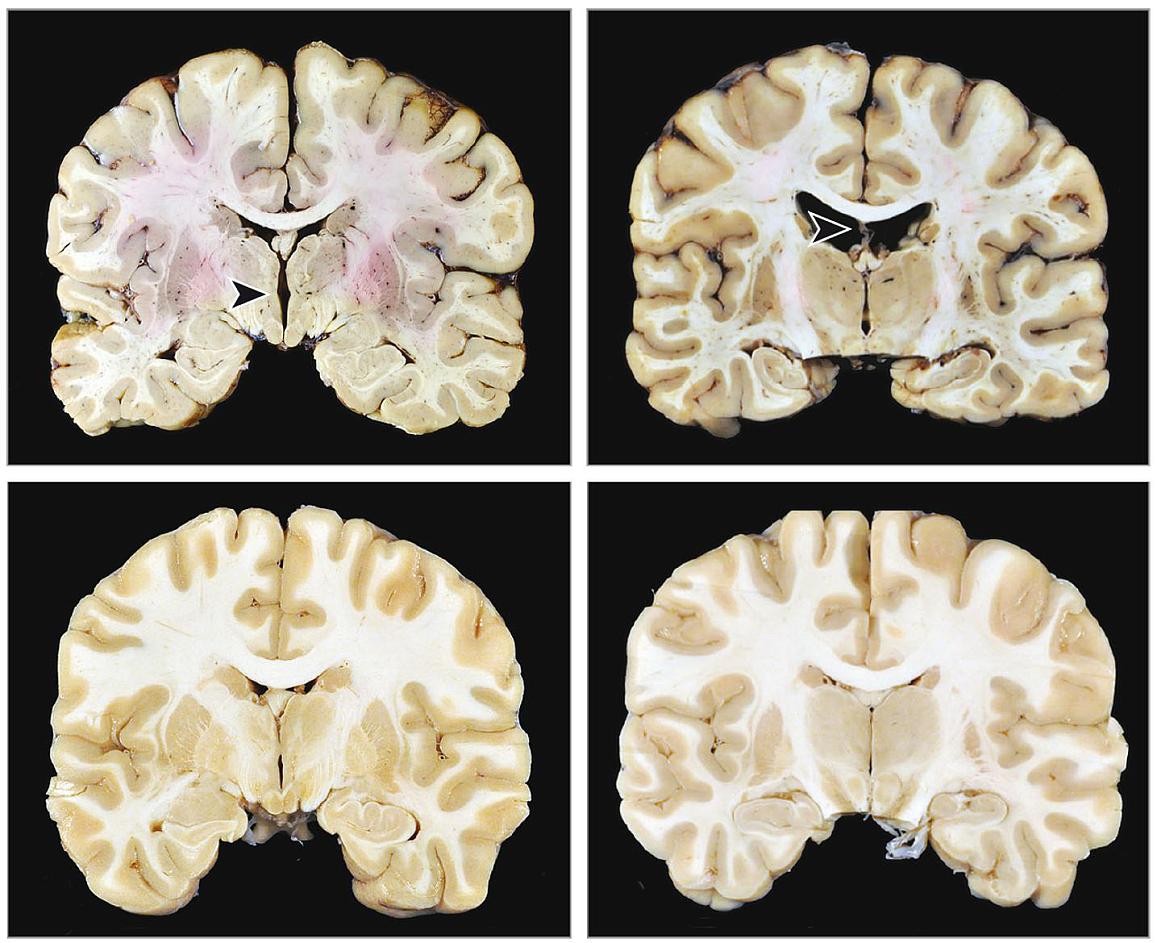Study Identifies CTE in Young Amateur Athletes
Images

A study of 152 deceased athletes less than 30 years old who were exposed to repeated head injury through contact sports reports that 63 (41%) had chronic traumatic encephalopathy (CTE), a degenerative brain disorder associated with exposure to head trauma. Neuropsychological symptoms were severe in both those with and without evidence of CTE. Suicide was the most common cause of death in both groups, followed by unintentional overdose.
Among the brain donors found to have CTE, 71% had played contact sports at a non-professional level (youth, high school, or college competition). Common sports included American football, ice hockey, soccer, rugby, and wrestling. The study, published in JAMA Neurology, confirms that CTE can occur even in young athletes exposed to repetitive head impacts. The research was supported in part by the National Institute of Neurological Disorders and Stroke (NINDS), part of the National Institutes of Health.
Because CTE cannot be definitively diagnosed in individuals while living, it is unknown how commonly CTE occurs in such athletes. As in all brain bank studies, donors differ from the general population and no estimates of prevalence can be concluded from this research. Most of the study donors were white, male football players with cognitive, behavioral, and/or mood symptoms. Their families desired neuropathologic examination after their loved one’s early death and donated to the Understanding Neurologic Injury and Traumatic Encephalopathy (UNITE) Brain Bank. There were no differences in cause of death or clinical symptoms between those with CTE and those without.
Nearly all the athletes with CTE were found to have a mild form (stages I or II, on a four-stage scale) in the study led by Ann C. McKee, MD, chief of neuropathology at VA Boston Healthcare System and director of the Boston University CTE Center. Those with CTE were more likely to be older (average age at death 25.3 years vs. 21.4). Among athletes who played football, those with CTE had a significantly longer playing career (2.8 years longer, on average) compared to those without CTE. Notably, the study includes what the authors believe to be the first report of CTE in an amateur female soccer player.
All athletes in this study had shown clinical symptoms, regardless of CTE status, as reported by those who knew them. Clinical symptoms of depression, apathy, difficulty controlling behaviors, and problems with decision-making were common, even among donors without CTE.
Taken together, the findings demonstrate that evidence of CTE can be found in young, symptomatic athletes who play contact sports; however, more studies are needed to understand the relationship between repeated head injury, white matter damage, CTE, and clinical symptoms. Given that 58% of the brain donors who died at a young age did not have evidence of CTE, the causes of severe symptoms in this group are likely due to multiple factors.
Related Articles
Citation
Study Identifies CTE in Young Amateur Athletes. Appl Radiol.
August 28, 2023